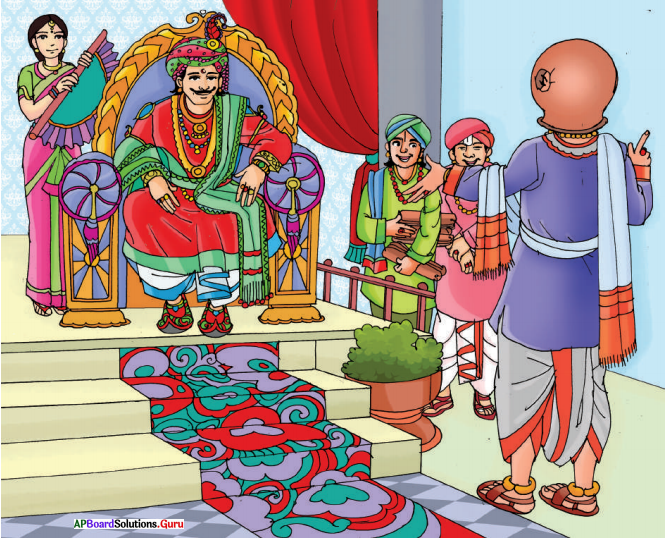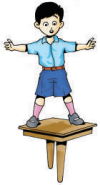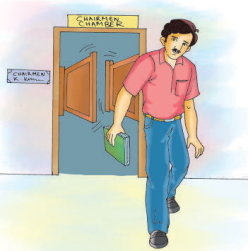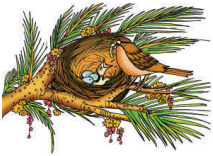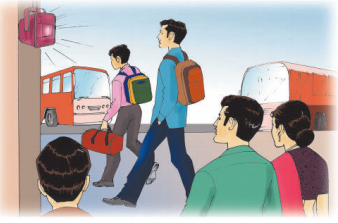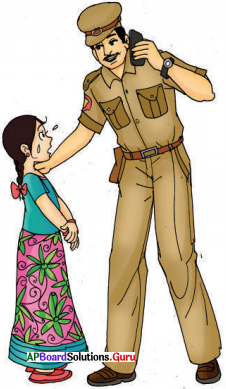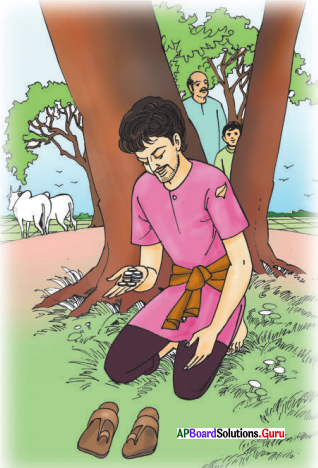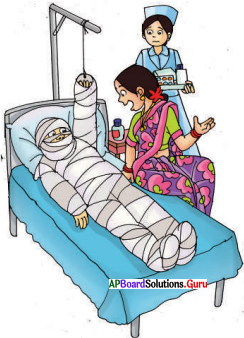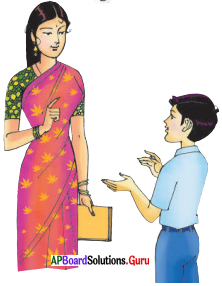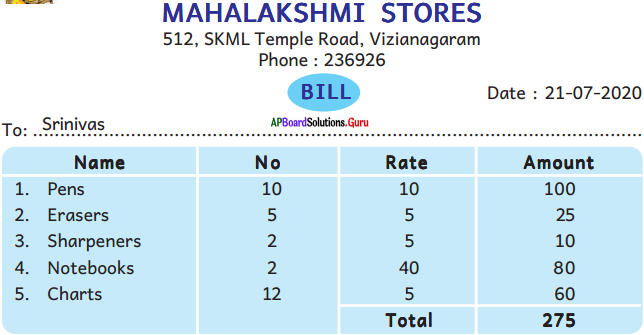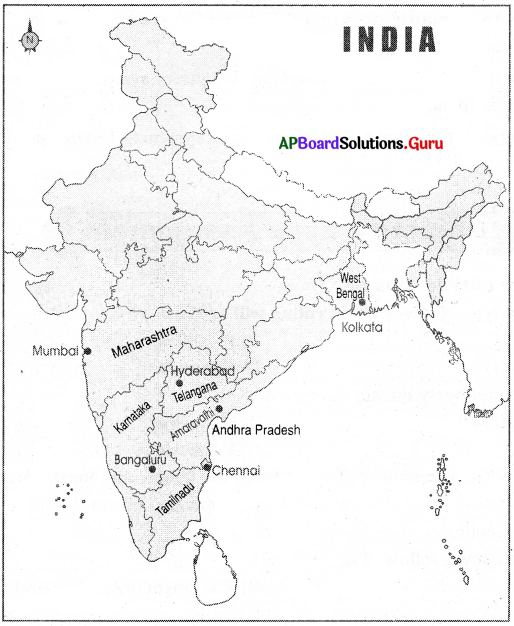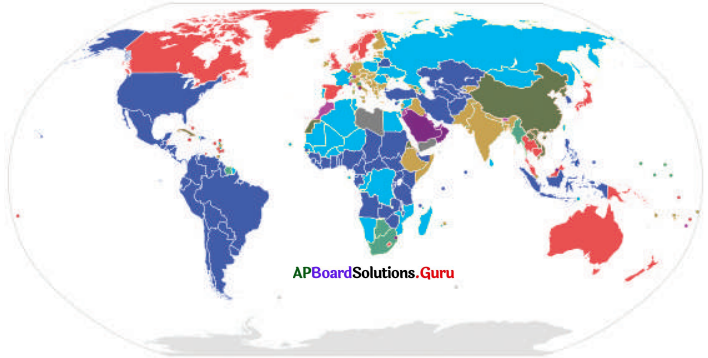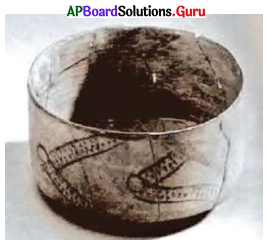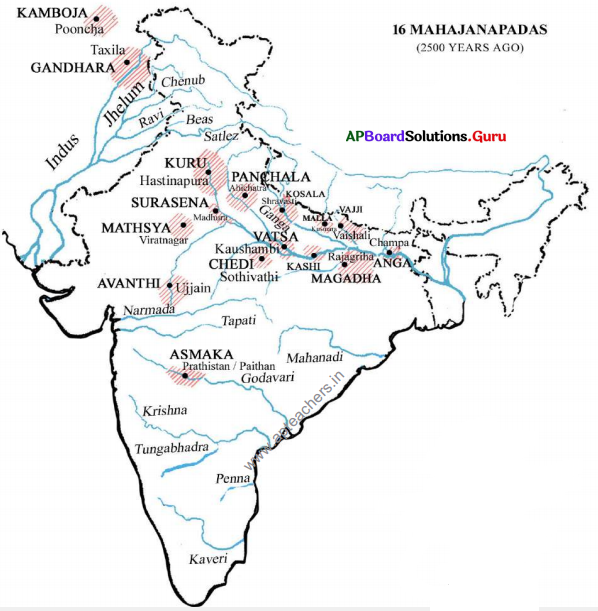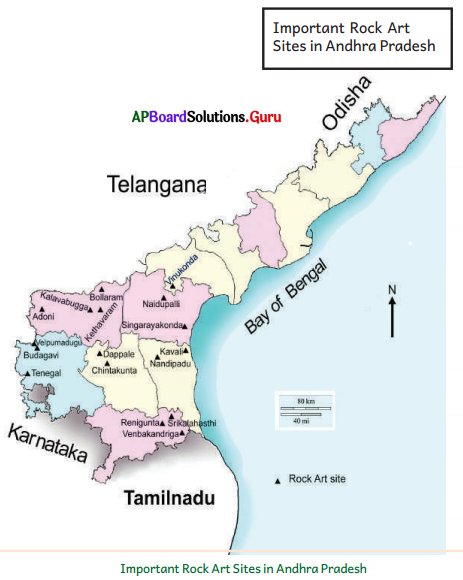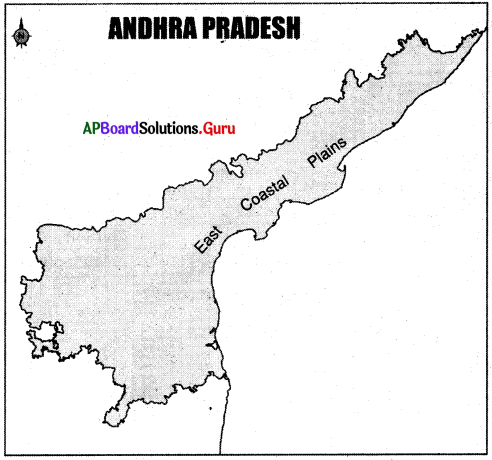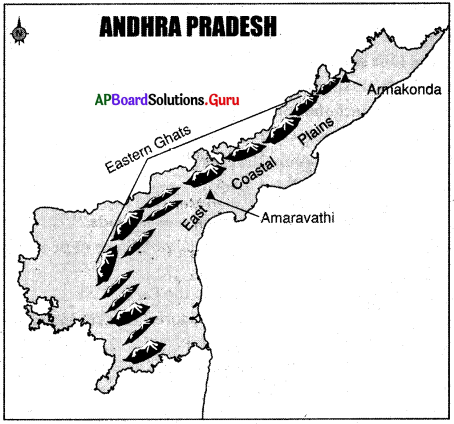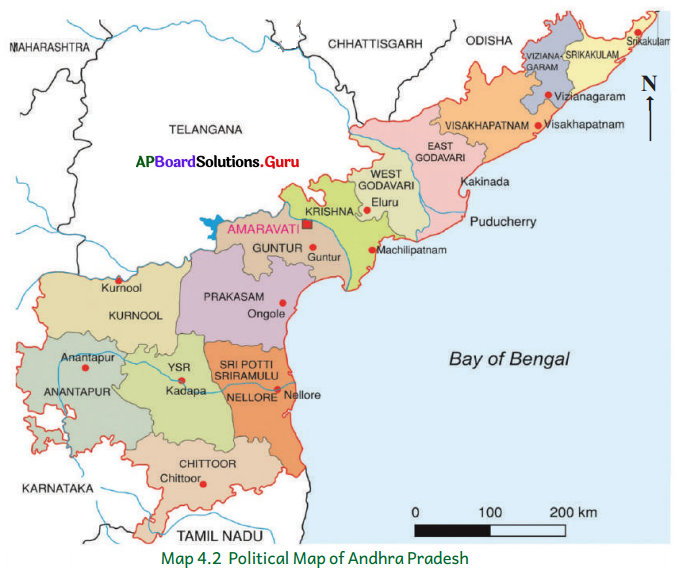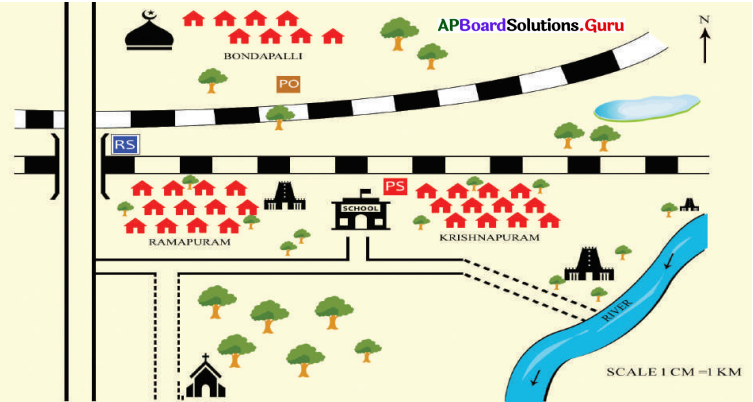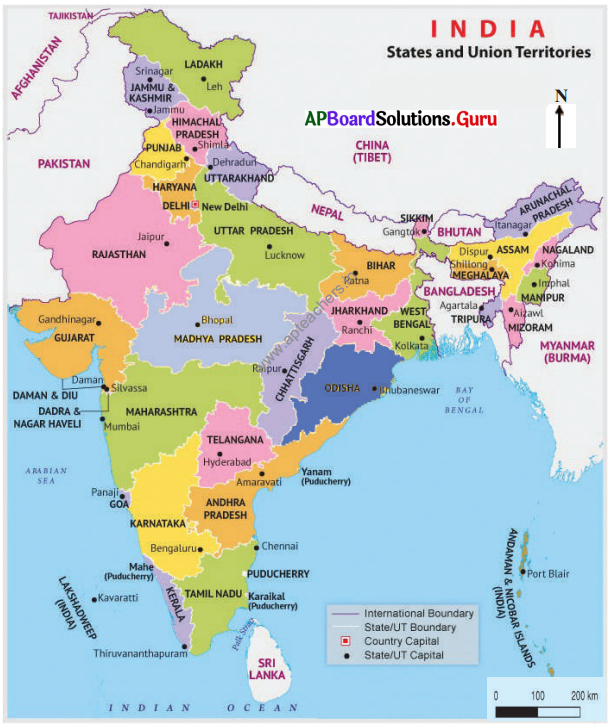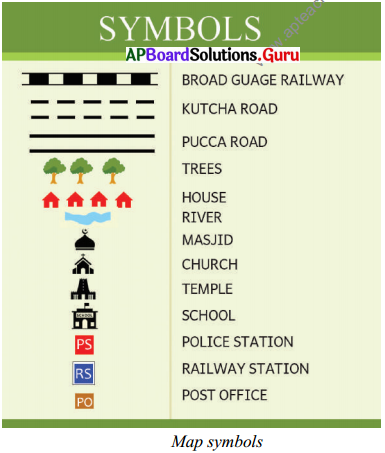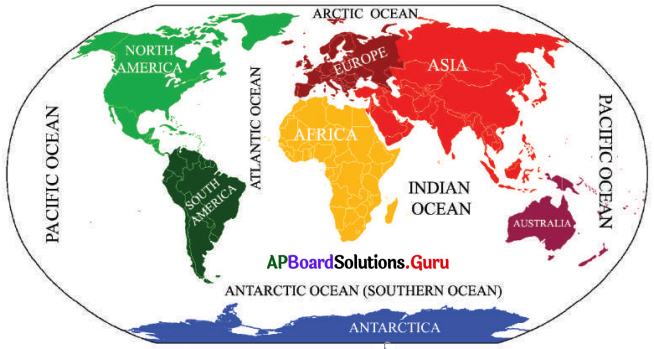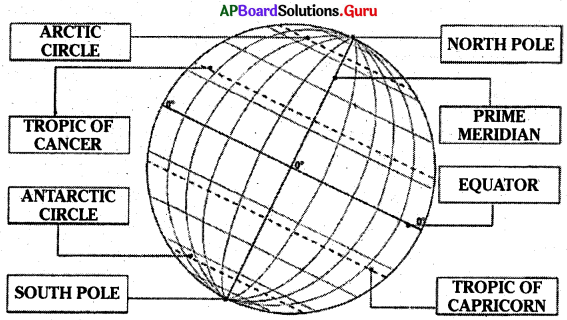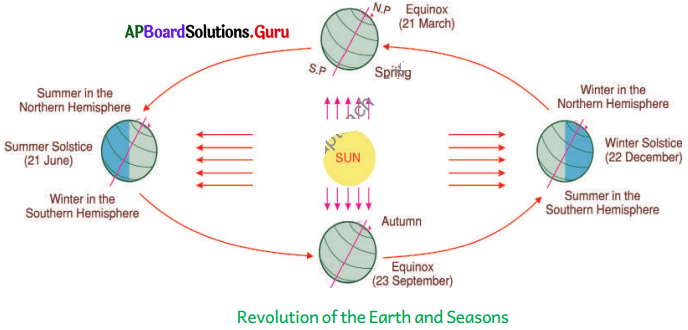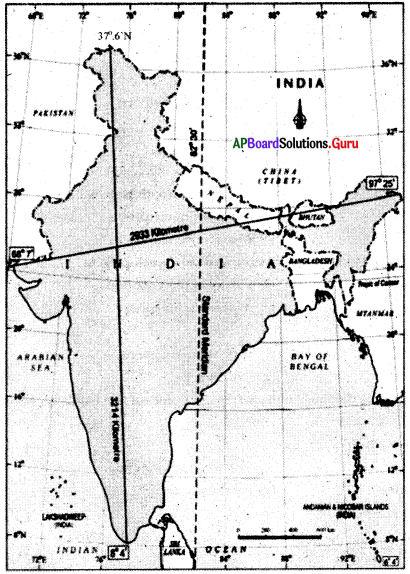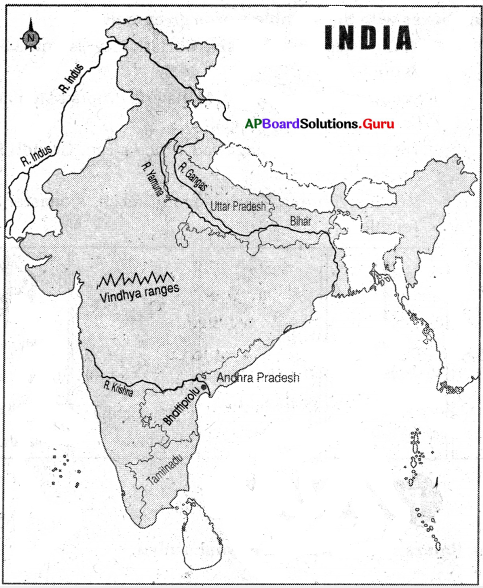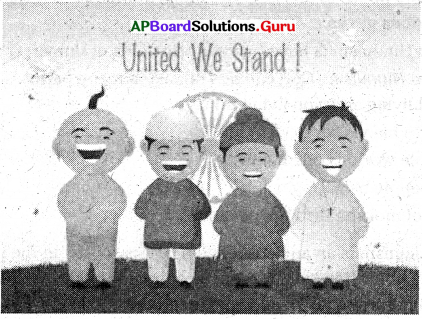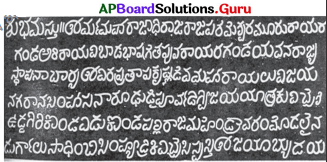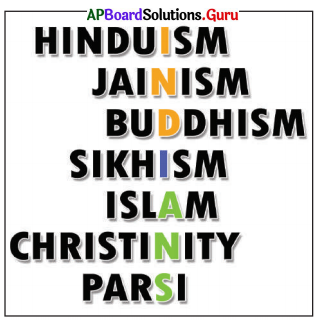SCERT AP Board 6th Class English Solutions 2nd Lesson The Snake Catcher Questions and Answers.
AP State Syllabus 6th Class English Solutions 2nd Lesson The Snake Catcher
6th Class English 2nd Lesson The Snake Catcher Textbook Questions and Answers
Look at the following picture and answer the questions that follow.
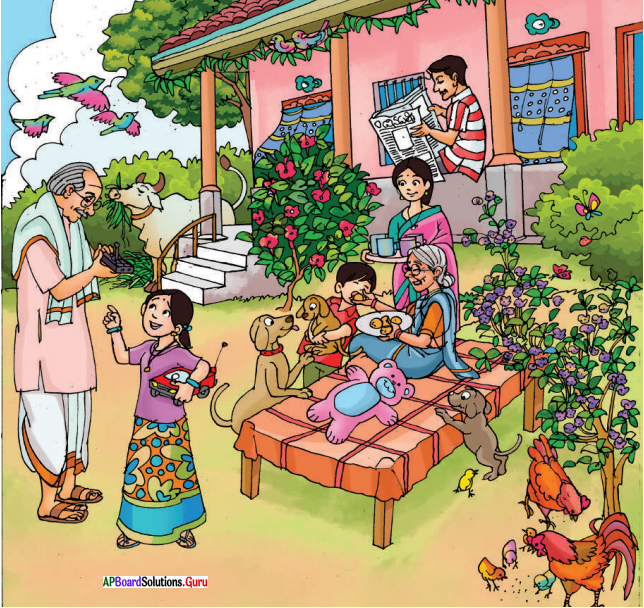
Question 1.
Do you have any pets at your house as shown in the picture?
Answer:
Yes. I have (We have) cats, dogs, hens, and cocks.
Question 2.
Are you comfortable with them?
Answer:
Yes, we are comfortable with the pets at our house.
Question 3.
Do you treat them in a friendly manner?
Answer:
Yes, we treat them in a friendly manner. We play with them.
![]()
Question 4.
If you find any strange animals, will you go near them?
Answer:
If we find any strange animals, we will not go near them because we are afraid of them. They may harm us.
Reading Comprehension
A. Answer the following questions in one or two sentences.
Question 1.
Why did the snake catcher go to the snowy mountains?
Answer:
The snake catcher went to the snowy mountains in search of new kinds of snakes. He wanted to display them to the town people and thereby raise a few coppers from the large crowd.
Question 2.
How was the dragon when the snake catcher found it in the snpwy mountains?
Answer:
When the snake catcher found the dragon in the snowy mountains, it was in dormant (inactive) state. It was big and looked attractive in golden yellow colour.
Question 3.
What made the snake catcher pick the dragon up with him?
Answer:
The dragon was big and looked attractive in golden yellow colour. The snake catcher thought that the dragon would change his fate. People would admire his brave act and treat him in a ceremonial (proud) way. He thought that he would get a lot of money and could lead a luxurious life. So he picked the dragon up with him.
![]()
Question 4.
In the end, the dragon began to move. How did that happen?
Answer:
When the snake catcher was displaying the dragon to the town people, the sun grew hotter. By the warmth of its rays, the dragon began to emerge (come out) slowly from its frozen state.
Question 5.
The snake catcher made a wrong choice. Do you agree with this statement? Why/Why not?
Answer:
Yes, the snake catcher made a wrong choice. I agree with this statement. He could not guess that the dragon was not dead.
B. Choose the correct option, to make the sentence meaningful.
1. The snake catcher caught the snakes because
a) he had a snake park.
b) it was his livelihood.
c) it was his passion.
Answer:
b) it was his livelihood.
2. The snake catcher found the dragon iu a ………… state.
a) sleeping
b) dead
c) frozen
Answer:
c) he wanted to sell it to the people.
3. He decided to take the dragon to the town because
a) it was big in size.
b) the town people had never seen it.
c) he wanted to sell it to the people.
Answer:
b) the town people had never seen it.
4. The crowd gathered in the bazaar because
a) of the attractive shouting of the snake catcher.
b) it was the usual practice of the towns people.
c) it was an announcement made by the government.
Answer:
a) of the attractive shouting of the snake catcher.
5. The mighty dragon swallowed
a) all the people in the street.
b) some people and the snake catcher.
c) only the snake catcher.
Answer:
b) some people and the snake catcher.
C. Read the following statements and say whether they are True or False. Write T’ for True and ‘F’ for False.
1. The snake catcher went trekking to the mountain.
Answer:
True
2. The snake catcher thought the dragon was dead.
Answer:
True
3. He put the dragon around his neck and came to the town.
Answer:
False
![]()
4. He told the town people that he had killed the mighty dragon.
Answer:
True
5. The dragon was a very familiar creature to the town people.
Answer:
False
6. The warmth of the sun?s rays brought the dragon to life.
Answer:
True
7. The dragon looked at the people and felt afraid.
Answer:
False
8. The snake catcher’s life ended in a tragic way.
Answer:
True
Vocabulary
Redd the following sentences from the lesson ‘The Snake Catcher’.
1. The snake catcher found a terrible and fierce-looking dragon.
2. It was big and looked attractive.
3. He bundled up the cold creature in a cloth.
4. People would admire his brave act.
5. This mighty snake would change his fate.
6. He could lead a luxurious life.
The underlined words in the above sentences tell us the quality of the nouns. Such words are called ‘adjectives’. What is an ‘Adjective? An adjective describes nouns. It provides further information about a noun like size, shape, colour and quality. Adjectives have different forms. They are Positive, Comparative and Superlative forms. They change their forms as follows. We know that the comparatives and superlatives take ‘-er’ and ‘-est’ respectively.
| Positive | Comparative | Superlative |
| big | bigger | biggest |
| cold | colder | coldest |
| mighty | mightier | mightiest |
| small | smellier | smallest |
| few | fewer | fewest |
| strong | stronger | strongest |
Adjectives with more than 2 syllables will take ‘more’ and ‘most’ in their comparative and superlative forms respectively. They are as follows:
| Positive | Comparative | Superlative |
| beautiful | more beautiful | most beautiful |
| terrible | more terrible | most terrible |
| attractive | more attractive | most attractive |
| luxurious | more luxurious | most luxurious |
Some adjectives take irregular forms as follows:
| Positive | Comparative | Superlative |
| bad | worse | worst |
| good | better | best |
| far | farther | farthest |
| little | less | least |
1. Now read the lesson thoroughly and find adjectives and write their other forms in your notebooks.
Answer:
| Positive | Comparative | Superlative |
| common | commoner | commonest |
| cold | colder | coldest |
| snowy | snowier | snowiest |
| few | fewer | fewest |
| large | larger | largest |
| big | bigger | biggest |
| brave | braver | bravest |
| thick | thicker | thickest |
| fierce | fiercer | fiercest |
| strange | stranger | strangest |
| slow | slower | slowest |
| loud | louder | loudest |
| easy | easier | easiest |
| foolish | more foolish | most foolish |
| terrible | more terrible | most terrible |
| attractive | more attractive | most attractive |
| ceremonial | more ceremonial | most ceremonial |
| luxurious | more luxurious | most luxurious |
| far | farther | farthest |
| new | newer | newest |
| dormant | more dormant | most dormant |
| hot | hotter | hottest |
2. Look at the picture. The crane wants to fill the cups with suitable adjectives from the pot. Remember all words in the pot are not adjectives and fill in the table.
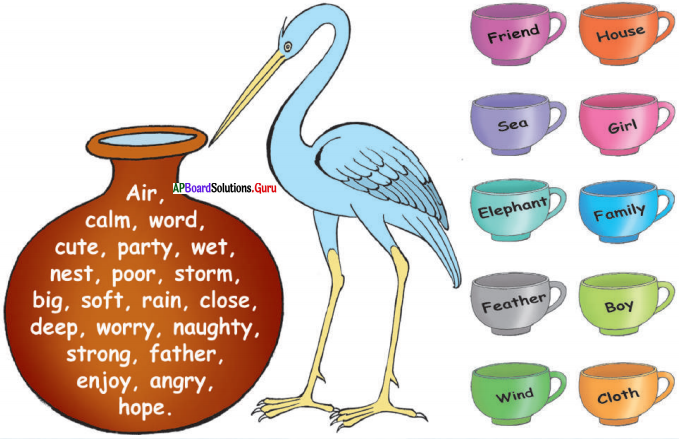
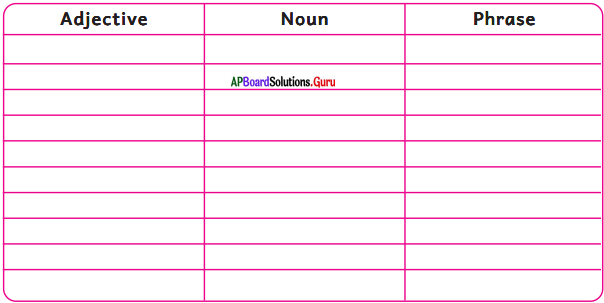
Answer:
| Adjective | Noun | Phrase |
| close | friend | close friend |
| deep | sea | deep sea |
| angry | elephant | angry elephant |
| soft | feather | soft feather |
| strong | wind | strong wind |
| big | house | big house |
| cute / naughty | girl | cute / naughty girl |
| poor | family | poor family |
| naughty | boy | naughty boy |
| wet | cloth | wet cloth |
| calm | sea | calm sea |
3. Now, fill in the blanks in the following paragraph with suitable adjective forms given in the box.
![]()
It is my ……..(1)……. sister’s birthday. My father presented her a …….. (2)…………. watch. I gave her a ………(3)……….. English dictionary. My mother prepared a ………(4)…….. cake. She decorated the table with ……(5)……. roses. Then she served us pieces of cake in ……..(6)…….. plates and …….(7)…….. badam milk in cups.
Answer:
- younger
- smart
- small
- delicious
- lovely
- clean
- hot
![]()
4. In the previous lesson you have already learnt about Antonyms and Synonyms. Synonyms are words which mean the same to other words. Whereas Antonyms are the words which are opposite in meaning to other words. Let’s learn some more antonyms which you came across in the lesson.
big × small
cool × hot
common × uncommon
different × same
brave × coward.
easy × difficult
thick × thin
strange × familiar
strong × weak
alive × dead
Match the Antonyms. One is done for you.
| 1. new | a) far |
| 2. poor | b) never |
| 3. beautiful | c) down |
| 4. near | d) old |
| 5. always | e) ugly |
| 6. bigger | f) rich |
| 7. up | g) smaller |
Answer:
| 1. new | d) old |
| 2. poor | f) rich |
| 3. beautiful | e) ugly |
| 4. near | a) far |
| 5. always | b) never |
| 6. bigger | g) smaller |
| 7. up | c) down |
Grammer
A. Present Continuous:
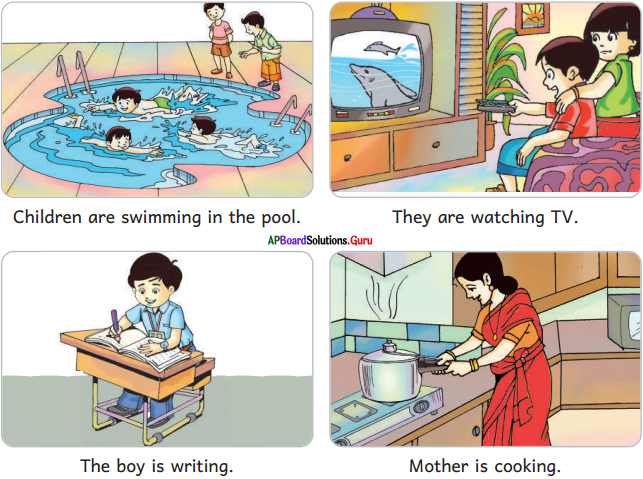
All the sentences in the above pictures are giving information about ‘ongoing actions’. We write sentences in the ‘Present Continuous (Present Progressive)’ to describe a continuing or ongoing action at the present time. The ‘-ing’ form of the verb is used in these contexts.
I. Now, fill in the blanks with suitable verb forms provided in brackets.
1. He is ………….. (complain) about my handwriting at present.
2. She is …………… (play) magnificent tennis in this match.
3. It is ………… (rain) now.
4. We’re …………. (have) dinner now.
5. Please be quiet. I’m ………… (work).
6. Look! Somebody is ……….. (swim) in the pool.
Answer:
1. He is complaining ( complain) about my handwriting at present.
2. She is playing (plav) magnificent tennis in this match.
3. It is raining (rain) now.
4. We’re having (have) dinner now.
5. Please be quiet. I’m working (work).
6. Look! Somebody is swimming (swim) in the pool.
![]()
II. Look at the following picture. Sony, Rita, Bannu, Prasad and Hari visited the park along with their pet dog and a dove. Look! There are butterflies and two small birds in the picture. Now write sentences with verbs denoting actions (action at present).You can use the following verbs. One is done for you.
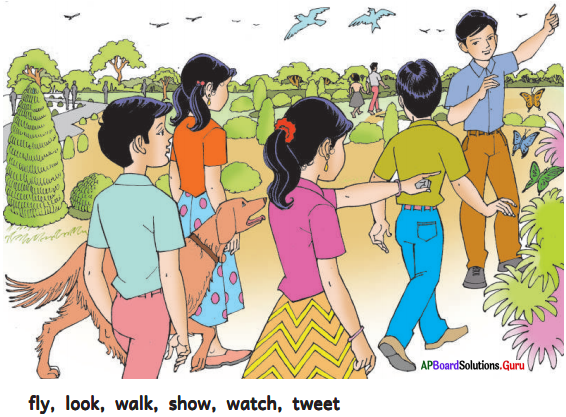
eg : A bird is tweeting.
Answer:
Birds are flying.
Children are looking at the flowers.
The dog is walking along with the children.
Rita is looking at the butterflies.
Prasad is showing something.
Sony is watching the birds.
III. Look at the following table. This table enables you to write sentences in the Present Continuous Tense. Prepare more sentences of your own in the context of ‘something happening now’.
One is done for you.
1. He is playing cricket now.
2. He is not playing cricket now.
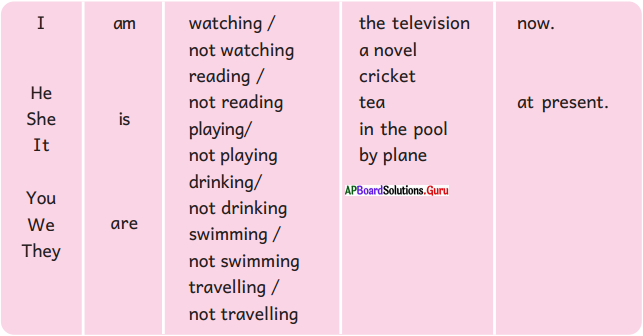
Answer:
- I am watching the television now.
- I am not watching the television at present.
- I am swimming in the pool at present.
- I am not travelling by plane now.
- I am not drinking tea at present.
- He is not swimming in the pool now.
- He is not watching the television at present.
- He is travelling by plane at present.
- He is reading a novel at present.
- She is watching the television at present.
- She is swimming in the pool at present.
- It is not swimming in the pool now.
- You are not watching the television at present.
- You are reading a novel now.
- We are not playing cricket now.
- We are watching cricket now.
- We are not drinking tea at present.
- They are not watching cricket now.
- They are not swimming in the pool at present.
- They are travelling by plane now.
B. Degrees of Comparison :
You already know about ‘Adjectives’ and their functions in sentences. They not only describe nouns but also compare them in degrees in terms of quality as follows.
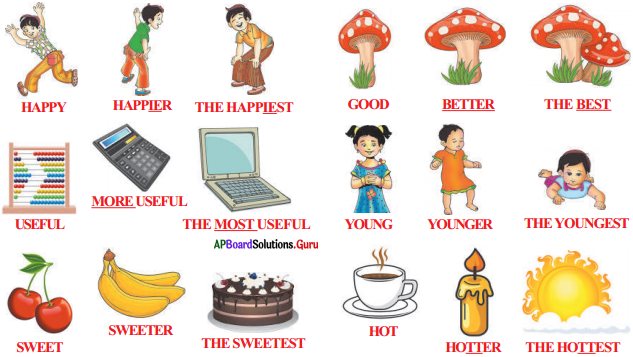
We use the comparative form of the adjective to compare one person or one thing with other person (s) or thing(s). We use the Superlative form of adjective to compare one person or thing with his/her/its/ whole group.
Read the following sentences.
1. My house is bigger than yours.
2. The Pacific Ocean is deeper than the Arctic Ocean.
3. The earth is larger than the moon.
4. The Jupiter is the biggest planet in our Solar system.
5. Sheela is the smartest girl in the class.
6. Mount Everest is the highest mountain in the world.
We use ‘than’ after Comparatives and in Superlative degree the article ‘the’ comes before the adjective form.
Now, fill in the blanks with suitable adjective forms.
1. Bhama is …………… Radha. (preety)
2. Harish is …………… boy in the class. (tall)
3. Elephant is …………… animal in the forest, (big)
4. Iron is …………… cotton. (heavy)
5. Anantapuramu is …………… district in Andhra Pradesh, (large)
Answer:
1. Bhama is prettier than Radha.
2. Harish is the tallest boy in the class.
3. Elephant is the biggest animal in the forest.
4. Iron is heavier than cotton.
5. Anantapuramu is the largest district in Andhra Pradesh.
Writing
Read the following NOTICE which was put up on your school Notice Board.
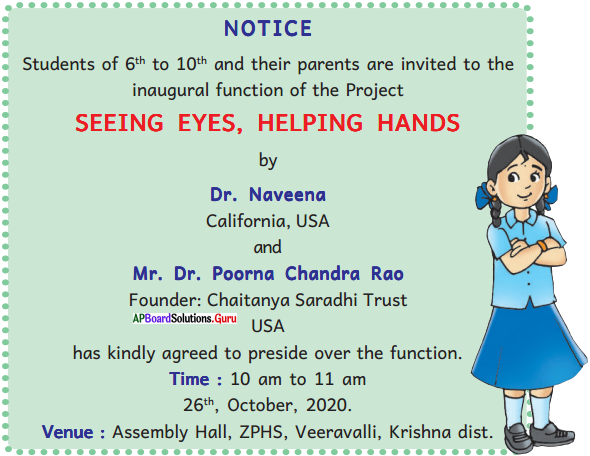
1. Now, to invite officials, donors and some other eminent persons of your village an Invitation card is needed. Prepare a formal invitation card based on the above notice in your text.
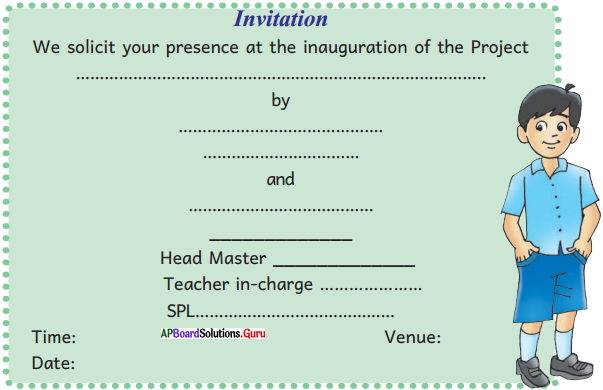
Answer:
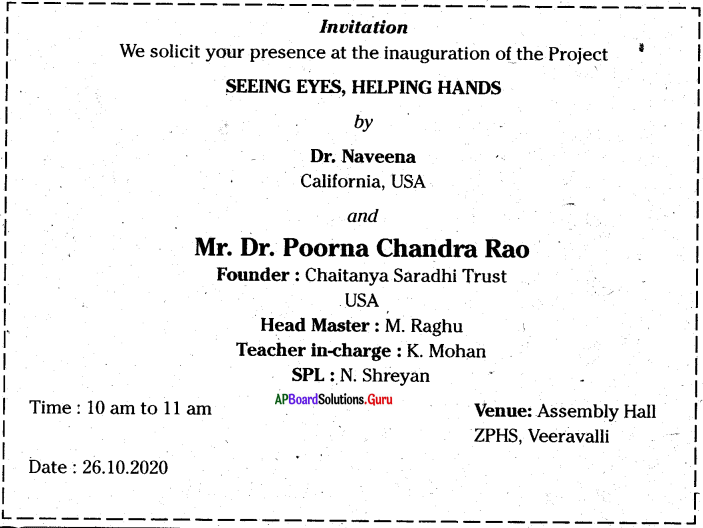
2. Now prepare an oral invitation toJnvite some special invitees. Imagine that you are the School Pupil Leader and invite them over phone.
Eg .: You may invite your Sarpanch, newspaper journalist, SHO (SI) of Police Station, elders of your village, etc.
Now complete the following conversations.
You (on the phone with the Journalist)
School Pupil Leader : Hello, Good morning. I am Sudha, SPL from ZPH SCHOOL, Veeravalli. Could I speak to you now, sir?
Newspaper Journalist : Very good morning Sudha. You may talk now itself.
School Pupil Leader : I have a request. Our school is starting a new social work project ………..
Answer:
School Pupil Leader : Hello, Good morning. I am Sudha, SPL from ZPH SCHOOL, Veeravalli. Could I speak to you now, sir?
Newspaper Journalist : Very good morning Sudha. You may talk now itself.
School Pupil Leader : I have a request. Our school is starting a new social work project ……….. ‘SAY NO TO PLASTIC’. I cordially invite you to attend the event without fail.
Newspaper Journalist : Thank you! I will certainly attend. At what time does the programme start?
School Pupil Leader : At 10 am.
Newspaper Journalist : Where does it take place?
School Pupil Leader : At School Assembly
Newspaper Journalist : OK. It is alright.
3. Now prepare another oral invitation, i.e. convey this message to your parents.
Answer:
I : Amma, here is an invitation for you.
Mother : Invitation! What is it about?
I : Our school is starting a new social work project ‘SAY NO TO PLASTIC’. The school cordially invites you to attend the event without fail.
Mother : Thank you! I will certainly attend. At what time does the programme start?
I : At 10 am.
Mother : Where does it take place?
I : At School Assembly
Mother : Who will inaugurate the project?
I : Dr. Naveena from California and Dr. Poorna Chandra Rao, the founder of Chaitanya Saradhi Trust.
Mother : OK. It is alright.
Talking Time
I. Role-Play
Work in pairs and role play the following conversation.
Latha : Sudha! Let’s go out to play.
Sudha : Not now! I’m doing my homework.
Latha : You can do it later. Let’s go and play.
Sudha : Sorry. I’d like to do my work first.
Latha : You won’t get a medal for it.
Sudha : My grandfather has taught me ‘Work is worship’. I don’t care whether I get any reward for the work I do or not.
Latha : Are you joining me or not ?
Sudha : Of course, I’ll, but only after completing my homework.
![]()
II. Language Functions
Here is the conversation that happened between Tarak and Rajan at a birthday party. Read it..
Tarak : Hello, Mr. Rajan! Good evening and warm welcome. We are looking forward to have you in this party.
Rajan : Good evening, where is the birthday boy? Here is a small gift for him.
Tarak : Oh, Thank you. Would you like to have some fruit juice? Here it is.
Rajan : Yes, please.
Tarak : Here are some sweets and special snacks.
Rajan : No, thanks. I’ve got enough.
Tarak : Thank you very much for your warm wishes to my child. It’s so special that you remember.
Rajan: You are welcome.
In the above conversation the phrases in italics are used in different occasions. Do you know when we use them? Let’s learn in detail.
1. Thank You : It is used to show that you are grateful to Somebody for something they have done.
2. Would you like to : To say in a polite way to offer something to somebody.
3. Yes, please : This is used to accept an offer/invitation.
4. No, thanks: This is used to give a negative reply in a polite way.
5. You’re welcome : This is used as a polite reply when somebody thanks you for something.
Now, fill in the blanks in the following paragraph with suitable phrases given in the box. Some phrases can be used more than once.
![]()
Phani is going to school on his bicycle. Suddenly he falls, as his bicycle tyre is flat. A mechanic, who is the owner of a nearby shop, approaches him and helps him stand. Phani says,”…………..” The mechanic replies,”……………” and asks “Are you alright?” “It’s paining,” says Phani. ”……… some water?” asks the mechanic.”…………….” says Phani; The mechanic serves him some water. “………..” says Phani.”………….. your bag?” asks the mechanic.” ……….. I can,” says Phani.
Answer:
Phani is going to school on his bicycle. Suddenly he falls, as his bicycle tyre is flat. A mechanic, who is the owner of a nearby shop, approaches him and helps him stand’. Phani says, “Thank you.” The mechanic replies, “It’s ok.” and asks “Are you alright?” “It’s paining,” says Phani. “Would YOU like to have some water?” asks the mechanic. “Yes, please.” says Phani. The mechanic serves him some water. “ Thank you.” says Phani. “Can I carry your bag?” asks the mechanic. “ No. please. 1 can,” says Phani.
III. Read the words aloud.
![]()
All these words ended in the ‘gh’ cluster. But they are pronounced in different ways. In some words ‘gh’ is pronounced as ‘f’ and in some words it is silent.
Arrange these words under correct headings based on their pronunciation.
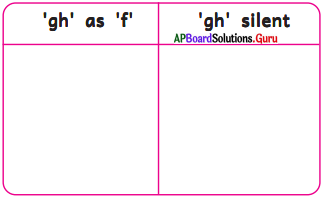
Answer:
| ‘gh’ as ‘f’ | ‘gh’ silent |
| cough | bough |
| tough | fight |
| enough | caught |
| laugh | thigh |
| rough | though |
Study Skills
Refer to a dictionary.
Arrange the following words in alphabetical order in the correct columns below.
dragon, raise, display, crowd, difficult, thick, stronger, warm, panic, mighty, pillar, luxurious

| A___H | I___Q | R___Z |
| crowd | luxurious | raise |
| difficult | mighty | stronger |
| display | panic | thick |
| dragon | pillar | warm |
Project Work
Collect the information relating to domestic / pet animals / birds in your location. Fill hi the information in the following table.

Display the table in the class. Remember all the animals / birds above may not be our pet animals.
Answer:

Fune Time
Anagrams:
Look at the following words:
Arc-car; elbow-below; eleven plus two-twelve plus one.
Look at this sentence.
Was it a cat I saw?
Have you noticed that letters in the left side word or phrase can be formed by rearranging the letters of right side words? This type of words are called Anagrams. Let’s observe some more words.
cat – act, inch – chin, night – thing, study – dusty
Can you frame some more anagrams like this? But remember, all the letters of the word or phrase must be used ONCE ONLY and ONLY ONCE. This is the basic rule of anagramming.
Answer:
| spot – stop – post | range – anger |
| team – meat – mate – tame | plate – petal |
| least – steal – stale | ring – grin |
| master – stream | dawn – wand |
| three-there | throw-worth |
| gulp-plug | form – from |
| page-gape | save – vase |
| hear – hare | mean – name – mane |
| draw – ward | these – sheet |
Language Game
ONE, TWO, THREE
1. Step One : Letters
Form pairs. One person says the letters of the alphabet from A to Z in his mind till the other person stops him. Write down the letter you get.
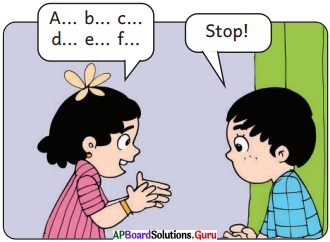
2. Step Two : Words
Both partners write 3 words each beginning with that letter.
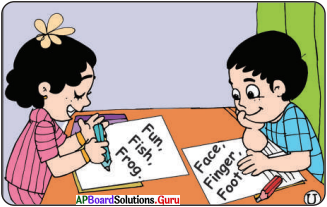
3. Step Three : Phrases
Exchange the words you write. Then use the words you get to write meaningful phrases.
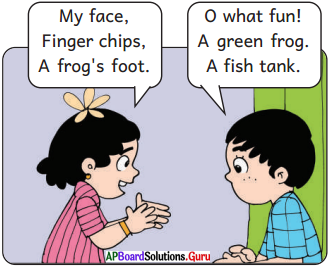
Link Puzzle
Here is a ‘Link Puzzle’ for you to solve. The last three letters of one word become the first three letters of the next word.
Clue
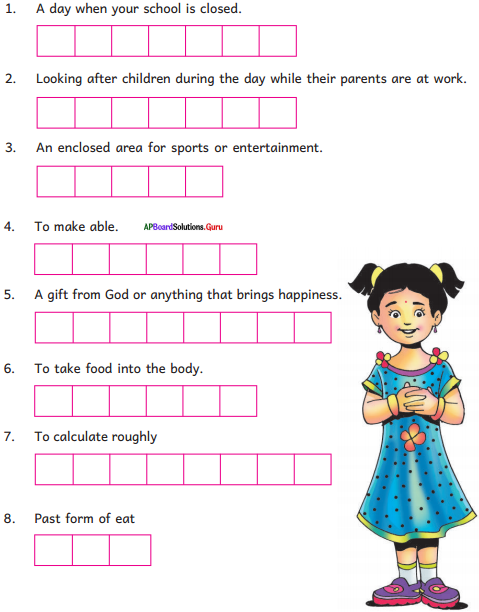
Answer:

The Coromandel Fishers

Rise, brothers, rise; the wakening skies pray to the morning light,
The wind lies asleep in the arms of the dawn like a child that has cried all night.
Come, let us gather our nets from the shore and set our catamarans free,
To capture the {gaping wealth of the tide, for we are the kings of the sea!
No longer delay, let us hasten away in the track of the sea gull’s call,
The sea ls our mother* the cloud is our brother* the waves are our comrades all.
What though we toss at the fall of the sun where the hand of the sea-god drives?
He who holds the storm by the hair, will hide in his breast our lives.
Sweet is the shade of the coconut glade, and the scent of the mango grove,
And sweet are the sands at the full o’ the moon with the sound of the voices
we love; But sweeter, 0 brothers, the kiss of the spray and the dance of the
wild fOctnfs glee; Row, brothers, row to the edge of the verge, where the low sky mates with the sea.
Figures of speech used in this poem :
- The wakening skies pray to the morning light. – Personification
- The wind lies asleep in the arms of the dawn like a child. – Simile
- The sea is our mother. – Metaphor
- The cloud is our brother. – Metaphor
- The waves are our comrades all. – Metaphor.
Appreciation
I. Match the rhyming words.
1. light – sea
2. free – lives
3. call – night
4. drives – all
Answer:
1. light – night
2. free – sea
3. call – all
4. drives – lives
II. Choose the correct options to complete the sentences.
1. The poet says that the sea is our………………
a) mother
b) brother
c) sister
d) comrades
Answer:
a) mother
2. The poet says that the cl6ud is our
a) mother
b) brother
c) sister
d) comrades
Answer:
b) brother
3. The poet says that the waves are our
a) mother
b) brother
c) sister
d) comrades
Answer:
d) comrades
III. Answer the following questions.
Question 1.
What sort of sounds can one hear early in the morning?
Answer:
One can hear the chirping of the birds, the sound of the leaves of the coconut tree, the sound of the rising waves, the voices of the fishermen gathering their nets and boats.
Question 2.
How is the wind described in line two?
Answer:
If the child cries all the night, it will sleep calmly in the early morning. Like that, the wind blowing all the night lies asleep in the arms of the dawn.
![]()
Question 3.
Why are the nets to be gathered?
Answer:
The fishermen put their nets on the sand to dry. In the morning before they set to go, the nets are to be gathered.
Question 4.
What do you think is the wealth of the fishermen?
Answer:
The fishes in the sea are the wealth of the fishermen.
Question 5.
What do you understand from the first line ‘The wakening skies pray to the morning light”?
Answer:
At night the sky might be sleeping, so the poetess describes the sky is wakening in the morning light, and it seems to pray.
Question 6.
The poet says, ‘Let us set our catamarans fr6e.’ What does it mean?
Answer:
The poet tells the fishermen to free the catamarans, because after fishing, the fishermen tied their catamarans to the pole. In the morning they have to go to fishing so they must untie their catamarans. ,
Question 7.
What happens if the fishermen are late in their work?
Answer:
If the fishermen are late in starting their work, the wind starts blowing, it will bb difficult to reach the deep part of ocean and they will not be able to follow the seagull’s call.
Question 8.
The poet describes many things as sweet. What are they? Among them what is considered to be the sweetest?
Answer:
The coconut tree’s shade is sweet. The smell of the mango grove is sweet. The sands at the full moon day are sweet. The voices of the people are sweet. The kiss of the spray means the water comes out of the. waves and sprinkles are sweeter. The dance of the wild foam’s sound [song] is also sweeter and the cool breeze on the sea is considered to be the best and.the sweetest.
The Snake Catcher Summary
Once there was a snake catcher in Iraq. He was a snake charmer and it was his livelihood. One day he went into the snowy mountains to search for a new kind of snake. He found a powerful and terrible dragon which seemed quite dead in frozen snow. It looked very attractive and he thought he would earn from that snake. He brought it down ih a bundle.
Later he started his show in a bazaar in a town. He announced that he killed the terrible snake and brought it to show them. People gathered curiously to watch it. As it was a hot day, the dragon moved slowly from its frozen state. Soon it burst forth from the bundle and came out. On seeing the terrible snake coming alive, people ran away from it in panic. The mighty serpent ate the people in its path and entwined itself around a pillar. It killed and ate the snake catcher also.
The Coromandel Fishers Summary
Sarojini Naidu as a poet belongs to an era of struggle, slavery, and freedom fighting. The poem is thought about the fishermen, yet it metaphorically reflects the poet’s desire for free India. The poem consists of three stanzas having four lines each. The rhyme scheme of the poem is AABB.
The wakening skies pray to the morning light, symbolizes the land which is welcoming independence after being in the darkness of slavery for so long. The wind lies asleep in the arms of the dawn like a child that has cried all night refers to the atrocities that the land of India and the people of India had suffered in the hands by the British during their cruel rule. The poet asks the freedom fighters to gather our nets from the shore and set our catamarans free. They are the kings of the sea which refers to India.
In the second stanza, the poet urges the freedom fighters not to delay andat ortce start fighting as the leaders (seagulls) have declared a war against the British and they should follow their leader’s path. The sea is our mother, the cloud is our brother, the waves are our comrades all i.e. the land is theirs and everything in it is their family and hence they (the freedom fighters) need not fear.
In the final stanza, the poet says that the comforts and the joys that the Indians enjoy might be sweet but the fragrance of independence and the feeling Of being free is quite sweeter and hence the freedom fighters should wage a final war on the British.
Explanation of the poem :
Stanza 1 :
In stanza 1, the poet asks the fishermen to “Rise” as the day is about to appear. She uses some symbols to fell this. First, she says that the wakening skies pray to the morning light which means that the sky which was sleeping in the night has woken up and is welcoming the light. Here the poet uses personification by using wakening (a human activity) for the sky (a non-living thing).
Next, she says the wind lies asleep in the arms of the dawn like a child that has cried all night meaning that the sea-wind that leads to the storm is now calm (as the tides rise in the night because of moon’s gravitational pull) because of the morning which is about to come.
Thus the wind is just like the child which kept crying throughout the night and now he is quiet. Here the poet uses Simile to compare now calm wind with a child. By using these two symbolic examples, she declares that the morning is near.
In the 3rd line, the poet asks the fishermen to gather their nets from the shore and set catamarans (a kind of boat used by fishermen) free in order to capture the leaping , wei lth of the tide, for they are the kings of the sea.
According to the poet, the fishermen should collect their nets from the sea-shores and take their boats because the tide is- full of wealth (fishes, sea-gulls, etc.) and they are the kings. They just need to go to the sea to capture the wealth that is theirs. Hence they should hurry.
Stanza 2:
In stanza 2, the poet asks the fishermen to do everything fast. The gull’s call is a symbol used to depict that morning is near.
The poet calls sea as their mother, cloud as brother and sea waves as their comrades, ^ i.e. companions. Here again, the poet uses personification.
Sea is considered the mother because it feeds them and helps them to sustain their life. Similarly, clouds are their brothers because they guide the fishermen while the waves are companions because they keep moving with them. The poet thus wants to say that they all are family and help each other.
She urges other not fear because even if they could not return back by the sunset, the sea-god which according to her, holds the sea-storm by the hair and Saves them (hide in his breast our lives).
Stanza 3:
In the final stanza, the poet says that the shade of the coconut glade, the scent of a mango grove, and the sands at the full of the moon with the sound of the voices they love are sweet and enjoyable but these joys are temporary.
Rather they should go for the kiss of the spray (the water drops falling on the face while in the sea) and the dance of the foam’s glee (the foam which forms by the up-down movement of the tides) which according to the poet are sweeter and work struggling.
In the last line, she asks the fishermen to depart for the point in the sea where the sun meets the sky i.e. horizon. Symbolically it refers to infinity or a place without an end. In this perspective, she asks the fishermen to dive into the infinite sea.
The Coromandel Fishers About the Poet
Sarojini Naidu was an Indian political leader born on February 13, 1879, in Hyderabad, India. In 1925, she was elected as the first female President of the Indian National Congress/ Naidu died on March 02, 1949, at Lucknow, Uttar Pradesh. Sarojini Naidu as a poet belongs to an era of struggle, slavery, and freedom fighting. Though the poem Coromandel Fishers is about fishermen, it metaphorically reflects the* poet’s desire for free India and thus she encourages the people of the nation to hasten their struggle.
